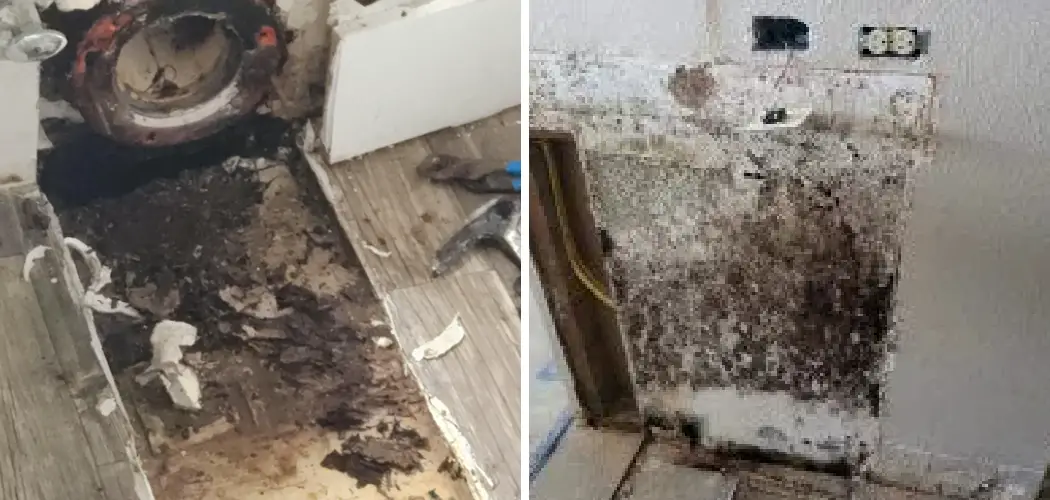Dealing with an unpleasant mold smell in the bathroom is a common issue that often arises due to excess moisture and poor ventilation. This musty odor not only disrupts the comfort of your home but can also signify the presence of mold spores, which pose significant health risks including respiratory problems, allergies, and skin irritations.
Addressing the root cause of this smell is essential for maintaining a healthy living environment. In this guide on how to get rid of mold smell in bathroom, we will explore effective steps to eliminate the odor and prevent mold growth.
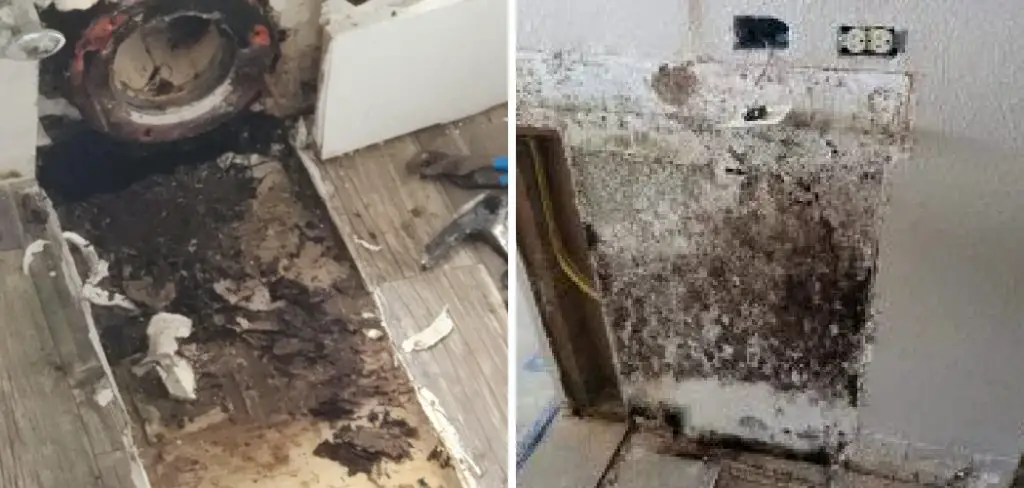
These steps include thorough cleaning strategies to remove existing mold, improving ventilation to reduce humidity levels, and implementing preventive measures to keep mold at bay. By following these methods, you can ensure a fresh and odor-free bathroom while enhancing the overall hygiene of your home.
Identify and Address the Source of Mold
Identifying and addressing the source of mold is the first crucial step in eliminating mold smell in your bathroom. Start by thoroughly inspecting the bathroom for any signs of visible mold growth. Pay close attention to common problem areas, such as shower corners, grout lines, around faucets, and under sinks. Use a flashlight to check dark and hidden spots where mold might be lurking. Mold often appears as dark spots or discoloration, and it can have a fuzzy or slimy texture.
Next, it’s important to repair any leaks or water damage that may be contributing to moisture buildup and, consequently, mold growth. Check all plumbing fixtures, including faucets, showerheads, and pipes, for leaks or drips. Even small leaks can create a humid environment conducive to mold proliferation. Promptly repair any identified leaks and ensure all plumbing is in good working order to prevent further water damage.
Improving ventilation in your bathroom is also essential to reduce humidity levels that encourage mold growth. Consider installing or upgrading ventilation fans to enhance air circulation and remove excess moisture from the air. Make sure the fans are powerful enough to ventilate the entire bathroom and are vented to the exterior. Running the exhaust fan during and after showers can significantly decrease the humidity, making it harder for mold to thrive.
How to Get Rid of Mold Smell in Bathroom: Cleaning and Deodorizing
Clean Surfaces
Use a mixture of water and white vinegar or a commercial mold and mildew cleaner to scrub and remove mold from bathroom surfaces. This solution is effective at killing mold spores and lifting them away from surfaces without harming your bathroom fixtures. Mix equal parts water and white vinegar in a spray bottle, apply it generously to moldy areas, and let it sit for at least an hour before scrubbing with a brush or sponge. Rinse thoroughly with clean water.
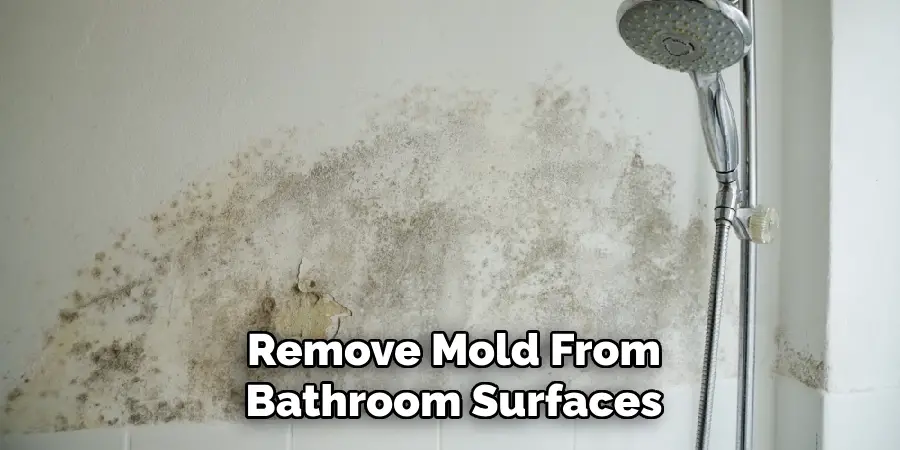
Remove Grime
Scrub grout lines, tile surfaces, and shower curtains with a brush or sponge to remove dirt and grime that can contribute to mold growth. Pay special attention to the grout lines as they are prone to trapping moisture and grime. A mixture of baking soda and water can effectively scrub these areas clean without causing damage. Spray the baking soda and water paste onto the grout, scrub it with a stiff brush, and rinse thoroughly.
Deodorize
Place bowls of activated charcoal or baking soda in the bathroom to absorb odors and freshen the air. Activated charcoal and baking soda are natural deodorizers that trap and neutralize unwanted smells, leaving your bathroom smelling clean and fresh. Place these bowls in discreet areas, such as under the sink or behind the toilet, to continuously absorb odors. Replace the bowls’ contents every few weeks to maintain their effectiveness.
Preventive Measures
Maintain Dryness
Maintaining dryness is one of the most effective ways to prevent mold growth in your bathroom. After each use, wipe down wet surfaces such as shower walls, countertops, and tubs. This simple practice prevents moisture buildup, making it less likely for mold to find a hospitable environment. Keeping a squeegee or a microfiber cloth handy can make this process quick and easy.
Use Exhaust Fans
Running exhaust fans during and after showers is crucial for removing excess humidity and moisture from the air. These fans help improve air circulation and keep the bathroom dry. Make sure your exhaust fan is powerful enough to ventilate the entire bathroom space and is vented to the outside of your home.

Operating the fan for at least 15-20 minutes, post-shower can significantly curb humidity levels.
Seal Grout
Applying a grout sealer to seal grout lines can be an effective measure to prevent moisture penetration, thereby reducing the risk of mold growth. Grout is particularly porous and can trap water, providing a perfect breeding ground for mold. A high-quality grout sealer can keep moisture out and extend the life of your grout, necessitating less frequent repairs and cleanings.
Increase Air Circulation
Increasing air circulation in the bathroom is another key preventive measure. Whenever possible, open windows to allow fresh air to enter and help dry out the space. If your bathroom doesn’t have windows, consider using a portable fan to promote airflow. Good circulation helps evaporate water quickly, hindering mold growth.
Use Mold-Resistant Products
When renovating or making updates to your bathroom, choose mold-resistant products such as paint, caulk, and building materials. Mold-resistant paints contain anti-microbial agents that can prevent mildew and mold from forming on your walls. Similarly, mold-resistant caulks can be used around bathtubs, sinks, and other areas that require sealing to prevent moisture from seeping in.
Clean Regularly
Establishing a regular cleaning routine can go a long way in preventing mold and mildew buildup in your bathroom. Make it a habit to scrub surfaces, including tiles and grout lines, on a weekly basis. Monthly deep cleaning sessions can be very effective at catching mold growth early and addressing it before it becomes a bigger problem.
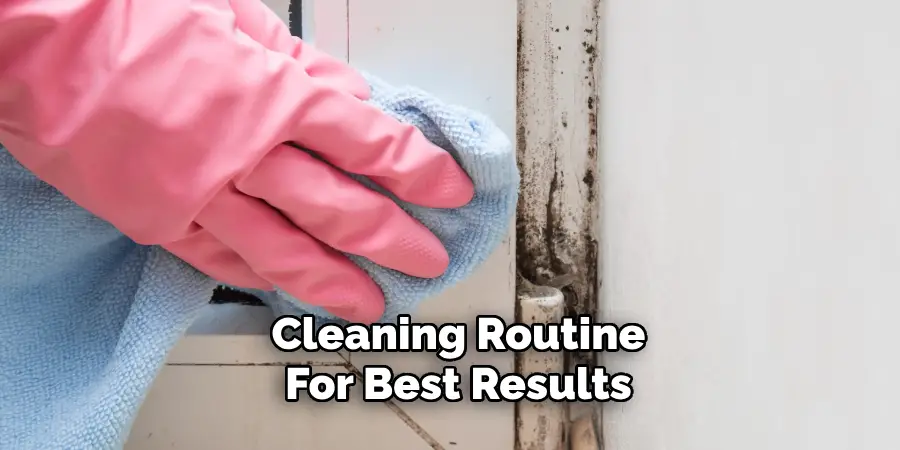
Use mold-killing cleaners during your cleaning routine for best results.
Check for Leaks
Water damage and leaks are among the most common causes of mold growth in bathrooms. Periodically check plumbing fixtures, including faucets, showerheads, and pipes, for any signs of leaks or water damage. Even a small drip can create a moist environment conducive to mold growth. Address and repair any issues promptly to maintain a mold-free bathroom. Regular inspections can help you catch problems early, saving you time and money on more extensive repairs down the line.

You can create a healthier and mold-resistant environment by incorporating these preventive strategies into your bathroom maintenance routine.
How to Get Rid of Mold Smell in Bathroom: Natural Remedies
Vinegar
Spray undiluted white vinegar on moldy surfaces and allow it to sit for several hours before scrubbing and rinsing. Vinegar is a natural, non-toxic cleaner that has been shown to effectively kill mold spores and prevent them from returning. This method works well on various surfaces, including tiles, grout, and shower curtains. Be sure to ventilate the area while cleaning and use a brush to thoroughly scrub away the mold.
Tea Tree Oil
Mix a few drops of tea tree oil with water in a spray bottle and spray it on moldy areas to inhibit mold growth and neutralize odors. Tea tree oil is a potent natural fungicide and antibacterial agent that can help control mold and mildew. After spraying, leave the solution on the affected areas without rinsing to allow the oil to continue working. This method is particularly useful for treating hidden mold in hard-to-reach places.
Hydrogen Peroxide
Mix hydrogen peroxide with water in equal parts and spray it on moldy surfaces, allowing it to sit for 10-15 minutes before scrubbing and rinsing. Hydrogen peroxide is a powerful oxidizer that can break down a mold’s structure, making it easier to remove. It is effective on porous surfaces such as wood and fabric, as well as non-porous surfaces like tile and glass. Always wear gloves and ensure proper ventilation when using hydrogen peroxide for cleaning.
Frequently Asked Questions (FAQs)
How Often Should I Clean My Bathroom to Prevent Mold?
To effectively prevent mold growth, it is recommended to clean your bathroom at least once a week. A regular cleaning routine that includes scrubbing surfaces, especially tiles and grout lines, can help eliminate any mold spores before they establish a foothold. Additionally, monthly deep cleaning sessions can catch any lingering mold issues early.
Can Mold-Resistant Products Completely Prevent Mold Growth?
While mold-resistant products like paints, caulks, and building materials can significantly reduce the risk of mold growth, they are not foolproof. These products contain anti-microbial agents that inhibit mold formation, but they should be used in conjunction with other preventive measures such as maintaining dryness, ensuring adequate ventilation, and regular cleaning to achieve the best results.
Is It Safe to Use Natural Remedies Like Vinegar and Tea Tree Oil for Mold Removal?
Yes, natural remedies such as vinegar and tea tree oil are safe and effective for mold removal, provided they are used correctly. Vinegar is a non-toxic, natural cleaner that kills mold spores, while tea tree oil is a potent fungicide and antibacterial agent. However, it is still important to ventilate the area well and follow safety guidelines, especially if you have allergies or respiratory sensitivities.
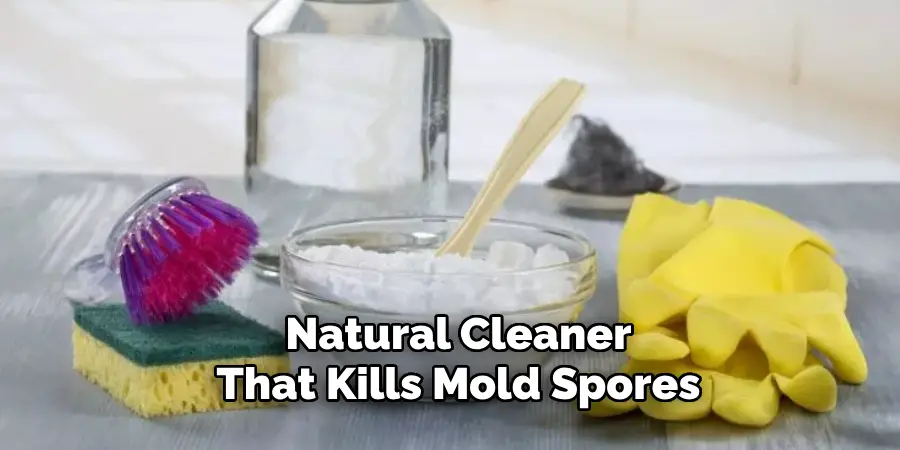
Always do a spot test on a discreet area before applying these remedies to larger surfaces.
Conclusion
In summary, knowing how to get rid of mold smell in bathroom involves a few critical steps. Start by identifying and addressing the source of mold through thorough inspections and repairs. Clean the affected areas using effective cleaning solutions and deodorize the space with natural agents like activated charcoal or baking soda. Follow up by implementing preventive measures such as maintaining dryness, using exhaust fans, sealing grout, increasing air circulation, and using mold-resistant products. Additionally, natural remedies like vinegar, tea tree oil, and hydrogen peroxide can be highly effective in keeping mold at bay.
Regular maintenance and proper ventilation are paramount in preventing mold growth and the associated odors in the bathroom. Moisture control and good air circulation are also essential practices.
Additional advice for maintaining a mold-free and fresh-smelling bathroom includes keeping all surfaces dry and addressing any leaks promptly. Regular inspections and timely repairs can make a significant difference in preserving a clean and healthy bathroom environment.

